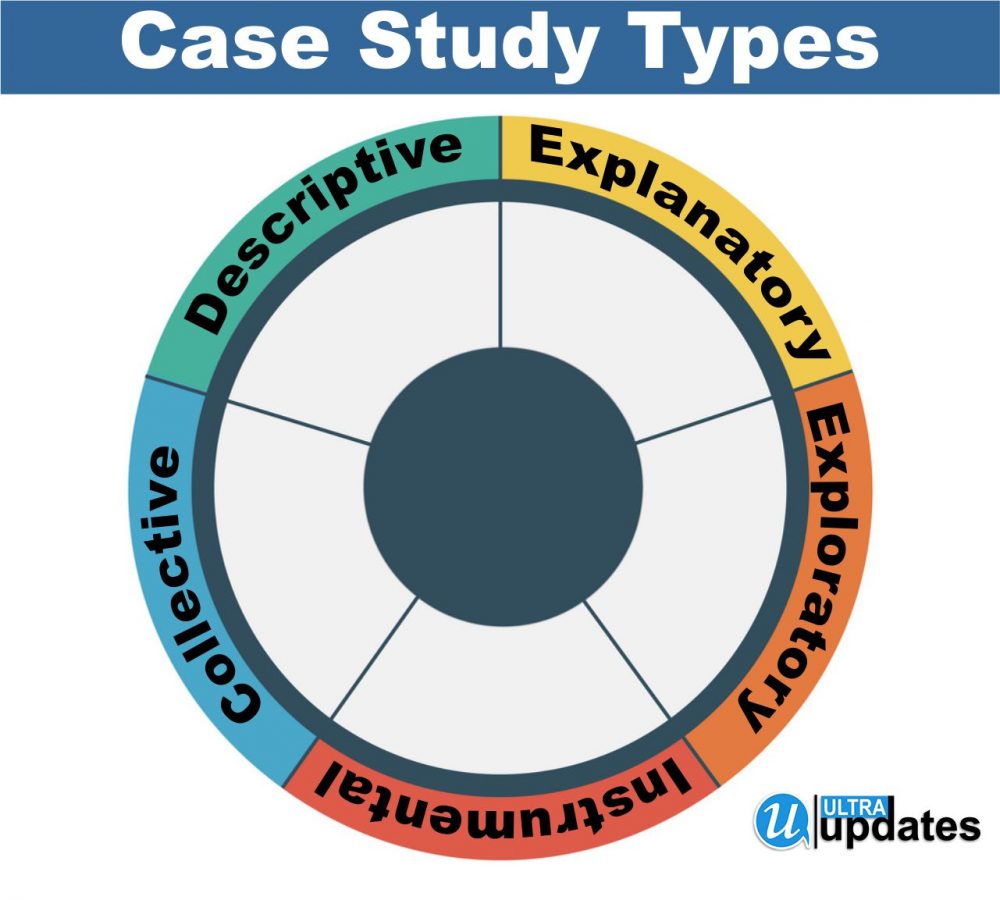Case Study – 05 Key Steps to Write a good Case Studies
Definition of Case study-
Case study is in-depth research on a person, place, group, event, or phenomenon. Every aspect of the subject’s life is studied in the case study. It is used in various fields of life such as education, political science, medical and psychological fields. It can also be defined as an investigation of an individual or a group or any other subject.
A case study is a popular research method in the business sector. Sometimes more than one cause can be researched at the same time. For instance, Old mobile phones versus modern mobile phones. The most important aim of a case study is researching a specific step or investigating a real-life phenomenon.
What are the types of case studies?
A case study is a research about a person, place, organization, or phenomenon. There are general 5 types of case studies that are given below:
- Descriptive
- Explanatory
- Exploratory
- Instrumental
- Collective
All of these case studies are elaborated below:
Descriptive case studies-
Descriptive studies means to describe bona fide circumstances or phenomena. It includes a lot of research about the situation the case study is based on. It basically aims to precisely and orderly define a real-life situation. It is used to demonstrate the attributes of a subject.
Descriptive studies mostly focus on answering the when, what, how, where questions but they can not answer “why” questions. It is a part of quantitative market research. The research on a particular subject in case studies should be accurate and precise. Before defining any situation or phenomenon the writer must have accurate knowledge about the specific topic.
Explanatory case studies-
The explanatory case studies focus on the explanation of a subject. It could either be the explanation of a situation, a question, or a phenomenon. In order to explain the facts about circumstances or phenomena the writer first should get precise information about the subject.
Explanatory case studies mostly focus on demonstrating facts about a real-life phenomenon. An explanatory case study’s “how” and “why” questions are mainly answered. It explains the occurrence and recurrence of events. It helps you in understanding a topic, how and why the incident is happening and predictions about future occurrences.
Exploratory case studies-
Exploratory case studies focus on giving answers to the questions such as “what” and “who”. Exploratory case studies focus on exploring a situation for the further research process. Exploratory case studies mostly focus on real-life contexts and circumstances. It is mostly used in political and scientific sciences.
Commonly, it is used to recognize research questions and techniques for extensive and complicated studies. In exploratory case studies, the academics use different methods of collecting information about the specific situation. Surveys, questionnaires, and interviews are some of the methods of collecting information in exploratory case studies.
Instrumental case studies-
Instrumental case studies are similar to descriptive case studies. It also mainly focuses on the study of a case. This case may be a place, thing, person, situation, or phenomenon. It studies the case to capture intuition into a phenomenon. It focuses on understanding the relationship of the phenomenon.
For instance, a researcher is interested in studying teenagers’ obesity rates. It starts a campaign with a gym and offers an exercise program. In this case, the focus is not on the teenagers and the exercise program. The focus is on the relationship between teenagers and exercise, and why specific youngsters become obese.
Collective case studies-
Collective case studies mean the study of more than one case. These cases can relate to each other. Collective case studies are the same in nature and are simply known as the study of multiple cases. A collective case study refers to the study of different cases at the same time.
In this case, the researcher needs to study every single case and get accurate information about all the cases. The study of multiple cases brings a lot of effort into the work and the false information about a single case can ruin the whole collective case study. Thus a researcher must search for legit information in order to make an impressive case study.
Read Also: Everything is a Remix Case Study: The iPhone
What are the parts of a case study?
Writing a case study is not an easy process as it includes various steps. These steps are called parts of a case study. Following are the important parts of a case study:
- Introduction
- Research
- Decision criteria
- Execution plan
- Closure
All of these parts are described briefly as follows:
Introduction-
The introduction means the basic information about the topic the specific case study is on or if it is on multiple cases the introduction includes basic information about all the cases. The introduction should include all the necessary details about the cases and it should not be that long that it would become boring.
The introduction must not include unnecessary and unrelated details. The information provided in it should be precise and accurate. The introduction should state the problem being encountered and considered in a much more frequent manner.
Research-
Research is the most important part of a case study. Research is a necessary part of a case study in order to solve the problem being experienced. The research a researcher is doing must be accurate and precise. False information about the particular case will damage the criteria of a case study. Thus it is important to have valid information about the case in a specific case study.
Decision criteria-
Decision criteria means that you ought to express your decisive factor. For instance, the necessity a person needs to solve a specific problem. It is one of the most important steps in a case study because it contains the solution needed for solving the problem. This step must be crystal clear and easy for the reader to understand.
Execution plan-
The implementation plan includes the process that a researcher has found to solve the specific problem in the particular case. The plan contains the strategies that help in solving the problem. This step focuses on executing those strategies in order to solve the problem. Thus, this step is required to be super accurate and the plan should not be complex, it should be easy to understand and implement.
Closure-
This segment includes the strong statements of a case study. It tells the reader about the powerful points of the case study. It proves a lot helpful for the reader to understand the whole case study by just taking a look at the closure. It is the last portion of a case study and it can also be named as the conclusion.
Key steps of writing a good case study-
Writing a case study contains different steps that we have talked about earlier in the article. But in order to write a good and convincible case study, you will need to follow some key points that are briefly described below:
Content table-
It is the most important element that you need to follow if you want to write an effective case study. It should contain a table of content. This table of content will include the contents of the case study. The contents of the article must be listed respectively as they are given in the table of contents.
The objective of the case study-
Define the objective of the case study you are writing so the reader would actually know the purpose of reading the case study. It must persuade the reader to consider that you are the best person for solving their problem. This portion should be simple and error-free making it much easier and more efficient for the reader to understand.
Discover the angle-
In order to write an effective case study, you should try to discover a perfect angle for describing your story. This angle should tell the reason why you are the best person for solving the problem and why no one else can solve the problem in such an effective manner.
Find the right audience-
Create your case study according to the interest of your audience. In simple words, make a case study that targets the right audience. It should follow the interest, lifestyle, hobbies, habits, cultures, and traditions. Try to convince them that you are the best solver to their problems.
Accuracy and precision-
The case study you are creating should be accurate and precise. It should tell the correct information and solution to the problem being solved in the study. All the information provided in the case study should not be false. Accuracy and precision make the case study impressive, effective, and easy to understand for the reader.
Conclusion-
In this article, we have talked about the case study. Definition of case study, its types, steps of writing a case study, and key steps of writing an effective case study. Everything is discussed and elaborated on briefly in this article. After reading this article you will be able to understand the basics of a case study and you will be able to write an impressive case study on your own.









